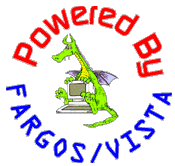Global Installation of the Sandbox Tool Suite
If a system administrator is deploying the sandbox tools suite to be used
by all users on the local system, steps similar to those for a local
installation are performed, except that a few files are populated to
globally-visible locations.
- Pick a global directory into which the sandboxTools.tar.gz package will be untar'd. Often this
is /opt/sandboxTools, which is the default in the configuration
files. Make the chosen directory if needed and untar the contents of
sandboxTools.tar.gz into it.
- Copy sandbox_tools.sh prototype from the etc
directory to /etc/profile.d.
- Edit the new /etc/profile.d/sandbox_tools.sh and modify the
settings of BT_ROOT_PATH and
SB_TOOLS_ROOT appropriately. Verify that the file is
readable by regular users, but not writeable. If necessary, fix the
permissions using chown.
- Source the modified sandbox_tools.sh to pick up the new
environment variables.
- Copy mksb_completion.sh and workon_completion.sh
(and any other completion scripts that might be present) to
/etc/bash_completion.d. Verify that these are readable by
regular users, but not writeable. If necessary, fix the permissions using
chown.
- Run the cmdSource/compileSandboxSandboxPathCommand.sh
script. This will compile the performance-sensitive filesystem-related
commands and place the resulting executables in the appropriate operating
system/CPU architecture-specific bin directory. Verify that
these are readable and executable by regular users, but not writeable. If
necessary, fix the permissions using chown.
- If deploying on an alternate operating system, either rename the
default Linux.noarch to the local operating system or
(preferably) add a symbolic link, similar to this for MacOS:
# ln -s Darwin.noarch Linux.noarch
Local Installation
If a developer cannot get the sandbox tools suite installed using
administrator privileges, it can be installed under the user's home
directory. Assuming the sandboxTools.tar.gz package was stored under
$HOME:
- cd $HOME
- mkdir sandboxTools
- cd sandboxTools
- tar xvf ../sandboxTools.tar.gz
- If the operating system is not Linux, either make a symbolic link to
Linux.noarch or simply rename it:
ln -s `uname -s`.noarch Linux.noarch
or
mv Linux.noarch `uname -s`.noarch
On Windows, one should just use the text "Windows" in place
of the "`uname -s`" usage and do the rename:
mv Linux.noarch Windows.noarch
- cd $HOME
- cp sandboxTools/etc/sandbox_tools.sh .
- Edit $HOME/sandbox_tools.sh to update
BT_ROOT_PATH and SB_TOOLS_ROOT. In the
fragment below, BT_ROOT_PATH uses a UNC name on Windows to
reference backing trees stored on a file server named
"fileserver". This would need to be set to something appropriate
for the local environment, which might be $HOME/backingTrees if
there is no other alternative. The setting for
SB_TOOLS_ROOT will be as shown since the sandbox tool
suite was installed to $HOME/sandboxTools. Other settings can be
changed if desired, but there is probably no need.
# Local preference for location of backing trees
# ------ EDIT THIS SETTING APPROPRIATELY! ------
BT_ROOT_PATH="${BT_ROOT_PATH:-//fileserver/backingTrees}"
export BT_ROOT_PATH
# Point to installation root of sandbox tools suite
# ------ EDIT THIS SETTING APPROPRIATELY! ------
SB_TOOLS_ROOT="${SB_TOOLS_ROOT:-${HOME}/sandboxTools}"
export SB_TOOLS_ROOT
- The login profile should get updated to include the
sandbox_tools.sh and pick up some of the shell completion
scripts, which probably means adding the following to the end of
$HOME/.bash_profile:
SB_USE_SSH_AGENT=1; export SB_USE_SSH_AGENT
source "$HOME/sandbox_tools.sh"
source "$SB_TOOLS_ROOT/etc/mksb_completion.sh"
source "$SB_TOOLS_ROOT/etc/workon_completion.sh"
If no SSH public keys are in use, the SB_USE_SSH_AGENT
value can be set to 0 to avoid the use of the ssh-agent.
From this point onwards, a new cygwin terminal shell will
setup the desired environment during its initialization.
- Start a new cygwin terminal to load the prepared environment
and build-and-install the performance-sensitive utilities:
$ cd $SB_TOOLS_ROOT/cmdSource
$ ./compileSandboxCommands.sh
Questions
Questions can be sent to:
Geoff Carpenter http://www.fargos.net/gcc.html

